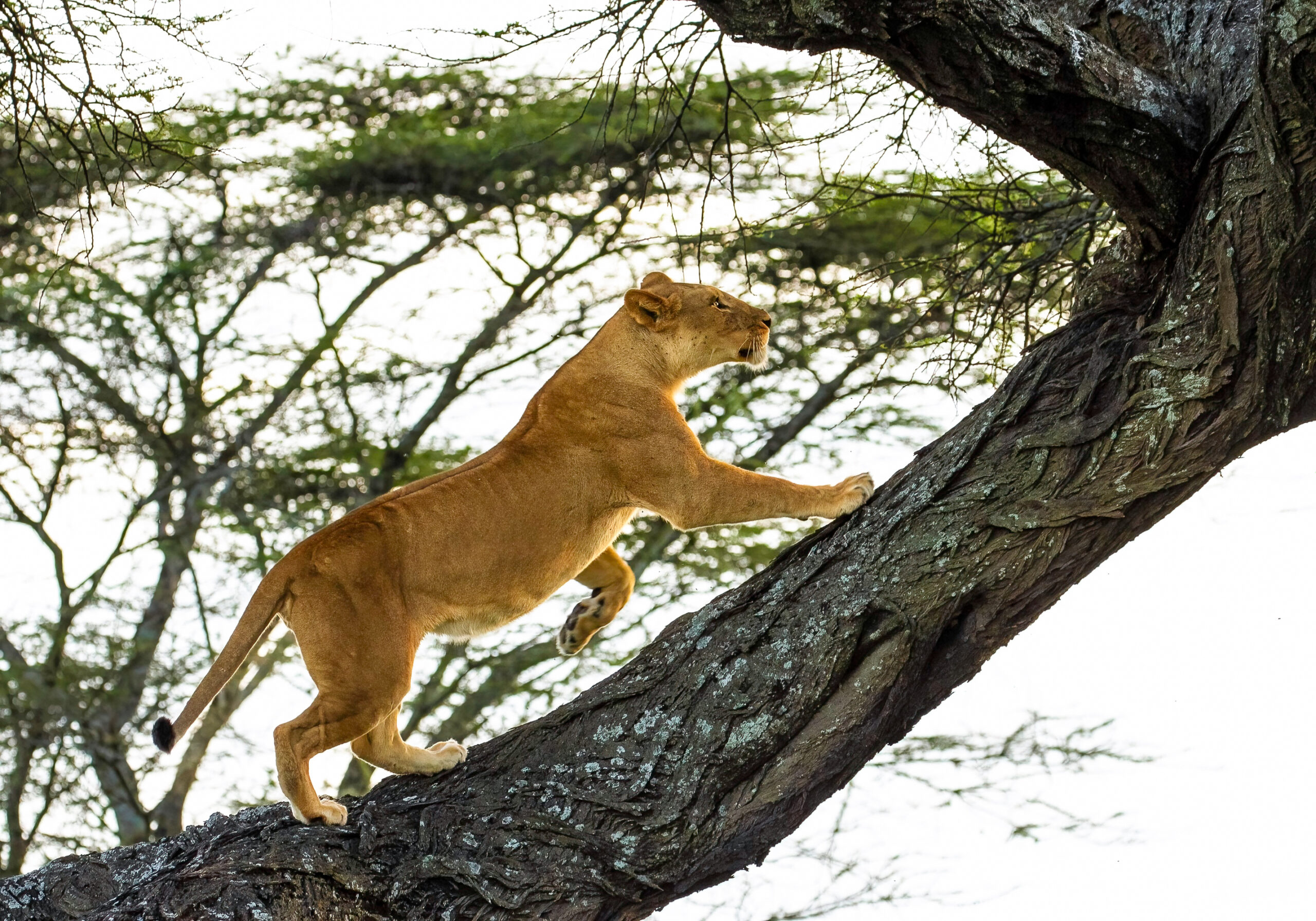Lake Manyara
A little bit about
Lake Manyara
The shallow lake Manyara is an alkaline lake found in this park that swells up and reduces in size basing on the seasons found within a long silvery bowl of salt deposits. It covers an area of 220 sq km which is two thirds of the park’s total surface area. The lake hosts a large number of pink flamingos in addition to other wildlife like hippos that dwell in the shallow part of the river.
Wildlife in Lake Manyara National Park
The game in Lake Manyara includes plenty of elephants, wildebeests along with so many giraffes, and buffaloes. In addition, the park is also very famous for its large number of African wildlife including zebras, impalas, warthogs and waterbucks. On the slopes of the escarpment, you may need to search a little hard for the tinny and renowned shy kirk’s dik dik and klipspringer.
The road circuit for game drives is limited and can be covered in about 3 to 4 hours where you can see the animals that are always on the move. On Average a Tanzania safari cost about $200 per day if you are using road. A luxury safari involving flights translated into high prices. It is therefore worth to revisit. Most safari companies organize for afternoon visits but taking a morning one is far much better as there are fewer other vehicles yet with more wildlife activity.
Birds in Lake Manyara
The large number of birds found in Lake Manyara National Parks differs basing on one habitat to another. Often; you will be able to see huge flocks of pelicans and pink flamingoes on the lake, while close to the park borders and floodplains you will enjoys views of many egrets, stilts erons, spoonbills, stalks and other waders. The woodlands equally will reward you with great bird views thanks to the so much water around. But the more interesting species will be viewed in the evergreen forests; for example, crowned eagles, crested guinea fowl and the silvery cheeked hornbills.
Why Book With Us?
Price Includes
- Transportation in a 4×4 safari vehicle
- Professional, English speaking guide
- Transportation in a 4×4 safari vehicle
- Overnight accommodation
- All national park fees
- Mineral water & meals while on safari
- All government taxes
Price Excludes
- Visa and Travel insurance
- Guide Service Fee
- International or Local Flights
- Personal spending money for souvenirs etc.
- Optional activities
About Lake Manyara
Discover Lake Manyara With Us

There are a number of fascinating tourist attractions that can be explored within Lake Manyara National Park. Located in the northern part of Tanzania, this National Park is 126 kilometers west of Arusha Town. The park is sized 330 square kilometers of which 220 sq kilometers form the lake when the water levels are high in the rainy season. Alternating to the nearest Park of Tarangire National Park through the kwakuchinja corridor the parks share world animals. They can be seen easily nearby the roads towards Lake Manyara and Serengeti National parks.
Below we have highlighted the top attraction / things to see in Lake Manyara National Park
Lake Manyara National Park is considered as an all year round Tanzania safari destination however the dry season from June to October is considered the best time for game viewing.
At the base of the River valley Escarpment is a small park, Lake Manyara National Park. Unlike the more Savanna dominated parks, its ground water forests give you superior change of the scenery.
In the peak tourist season, the northern section of the park is very crowded especially in the mornings for most of the year that is to say in June to October; however in the months of March and April the park is experiencing rains which makes it the low tourist season.
Lake Manyara Weather
Lake Manyara National Park experiences two main seasons in a year and that is the dry season and wet season each of these coming with its unique rewards as highlighted below.
In summary
The best time for viewing large mammals in Lake Manyara National Park is in the dry season from June to October and January to February, and then bird watching can best be done during the wet season from November to December and from March to May.
Lake Manyara has a big number of elephants, so many giraffes; zebras, wildebeests, impalas, waterbucks, and warthogs, the less-known shy Kik’s dik dik as well as the Klipspringer that dwell along the ramps of the escarpment. Leopards are hosted within the scattered forests and escarpment, while the healthy population of lions that are widely known for their unique tree climbing capability. In addition, you will not fail to notice the very large number of baboons in this park which can live in sizeable troops of up to 200 members.
There are various areas within the Park. Behind the splendid scenery of the Great Rift Valley’s steep escarpment in the west is the narrow area that safeguards the area between the escarpment and Lake Manyara. The silvery bowls of salt deposits facilitate the ability of the alkaline Lake Manyara to expand contract with the seasons. Grassy floodplains neighbor it so closely while bands of mixed acacia woodlands in the far end. There are also patches of ever green forests next to the escarpment that are watered by the perennial underground waters coming from the bottom of the escarpment.




